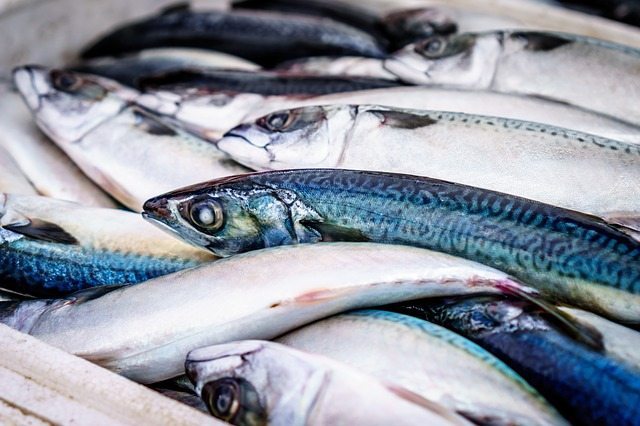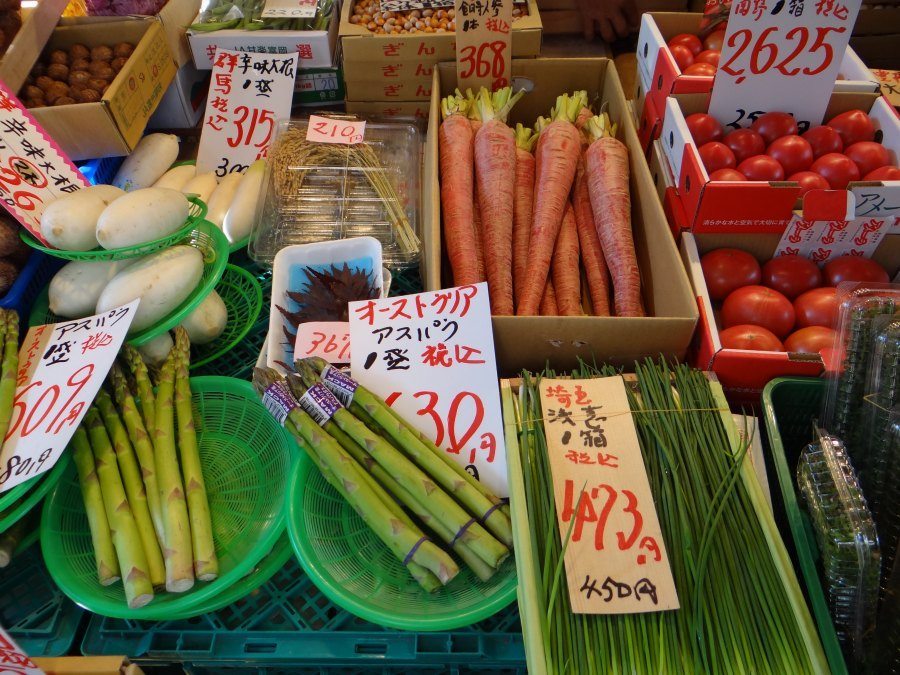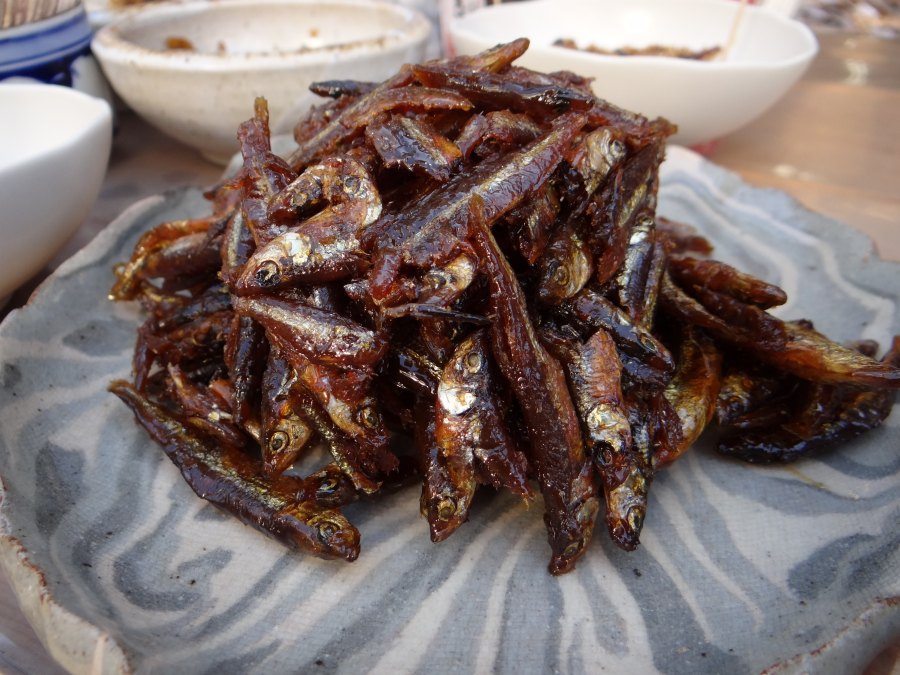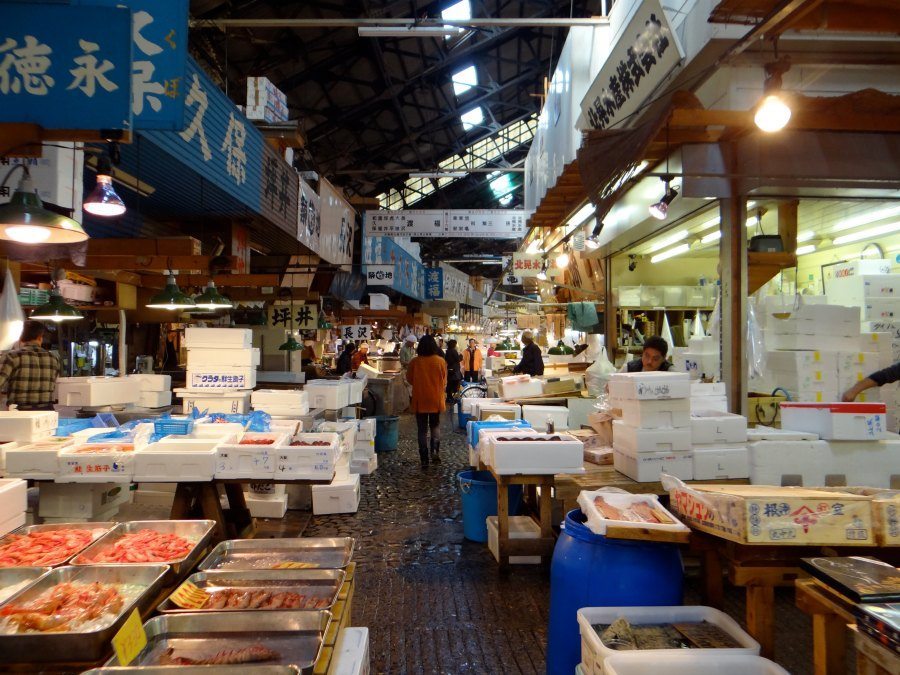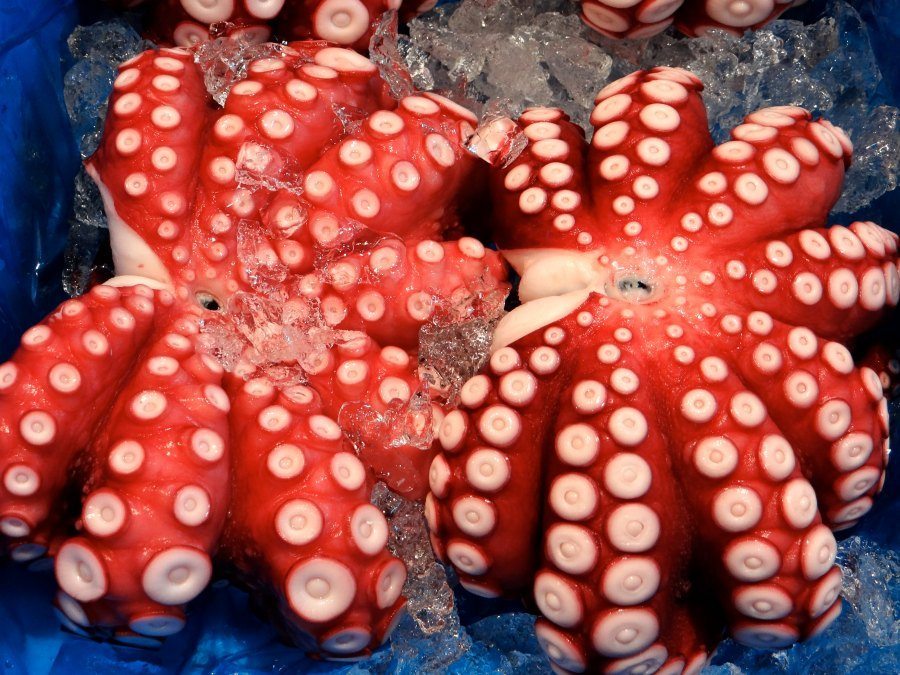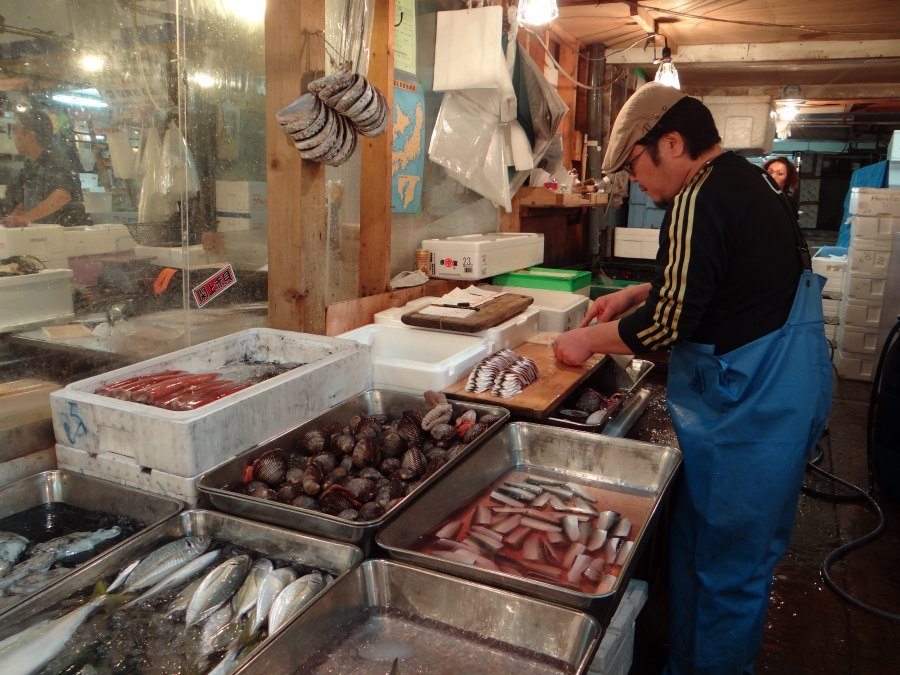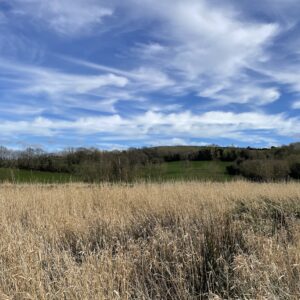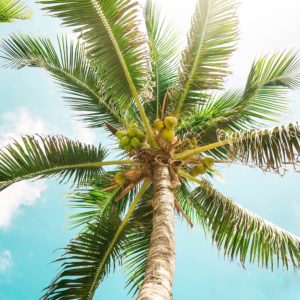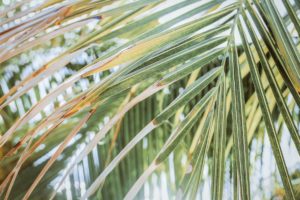My first trip to Tokyo lasted less than 72 hours so I really didn’t have too much time to explore every neighborhood or visit every historical monument. I did, however, spend a few hours at the famous Tsukiji fish market and wow – what an day! We arrived there around 8am, which sounds early but by the market’s standards, we were right on time.
Considered the world’s largest wholesale fish and seafood market, this is a huge tourist destination. It also provides a glimpse into local life here, as many Tokyo residents pick up their food here. The busiest hours are between 5:30-8am, which leaves the rest of the day to explore other neighborhoods in Tokyo. Here are a few tips to make your fish market experience as memorable as mine.
Define your purpose
Fish market vendors sells everything from fresh vegetables to chopsticks so it’s a good idea to have a plan before heading into the madness. Stick to the outer market it you’re mainly looking for fresh produce, food samples or housewares and head inside for fish. If you don’t have a specific reason for being at the market that’s perfectly fine too. Just note that it gets very crowded and it’s easy to feel overwhelmed by the amount of locals and tourists that keep this place buzzing all day long. The early bird definitely gets the worm, or the fish in this case, so plan your outing for first thing in the morning for the best selection of seafood.
What to Expect
This is a fish market, so naturally, there are lots of fish here and they come in all shapes and sizes. Some are served up as samples like the ones in this photo and others are quickly being turned into chopped sushi. The market is almost always crowded with both shoppers and sellers so keep an eye out so it’s a good idea to keep an eye on traffic. In the inner market, it gets even more crowded because workers are transporting themselves via Turret trucks. They aisles between the rows of vendors is also very tight so expect to get up close and personal with the fish. Even as a seasoned New Yorker, there were moments when I found it difficult to get out of the way.
What to See
There are a few distinct areas of the market and each offers something different. As I mentioned earlier, the outdoor market mainly sells fruit, vegetables and decorative items for the home while the inner market is where the newly caught fish are being sliced and packaged for sale. The third main area is where you can actually eat. There are several small restaurants all stacked next to each other and the lines for these joints is often long. I started in the outside market for about an hour and then ventured into the inner Seafood Wholesale area. I finished my tour by peering into some of the restaurants. If you’re unsure of what to see, stop by the information center for a map.
What Not to Do
There are a rules that you should follow, although I’m not sure how strictly they are enforced. Customers are technically not allowed to enter the Seafood Wholesale (inner market) area until 9am but a few members of our group went there around 8am and they didn’t have any problems. You are also not allowed to touch anything so as tempting as it is, refrain from laying your fingers on anything. This probably goes without saying but I do not recommend wearing anything expensive, as there puddles and dripping water will almost certainly drop on your clothes. This goes without saying but do not enter the off limit areas and leave your pets at home.
Essential Information
Unless your hotel is nearby, the best way to reach the market is via the subway. If traveling from Tokyo Station, take the Marunouchi Subway Line from Tokyo and get off at Ginza. Then transfer to the Hibiya Subway Line unfit you reach Tsukiji Station. You can also reach the market from Shinjuku Station by taking the Oedo Subway Line to Tsukiji Shijo Station. The tuna market is open to the public but only 120 visitors are allowed per day. This takes place daily from 5:25-6:15am. The outer market typically opens as early as 5am and closes around 2pm. Entrance to all parts of the market is free of charge. The market is closed on Sundays on holidays.
What was the coolest market you’ve ever shopped at? Tell me in the comments below!
This trip was hosted by the Tokyo Metropolitan Government. All opinions are my own.
Like me on Facebook and Tweet me: @BohemianTrails
Sign up for my free monthly BOHO BLAST!
